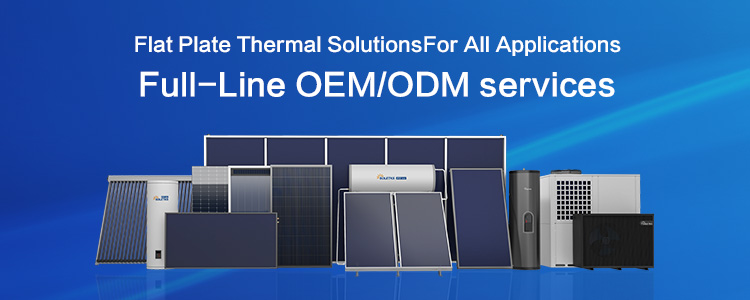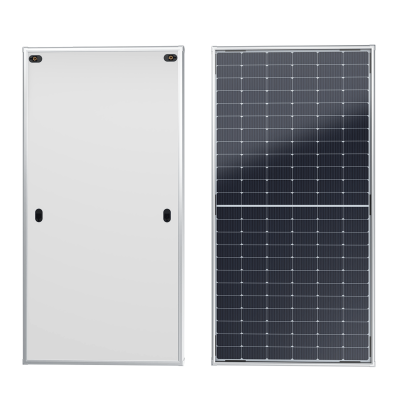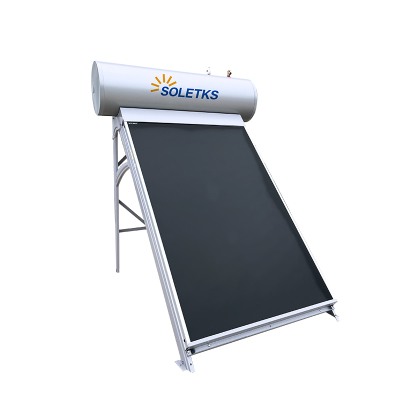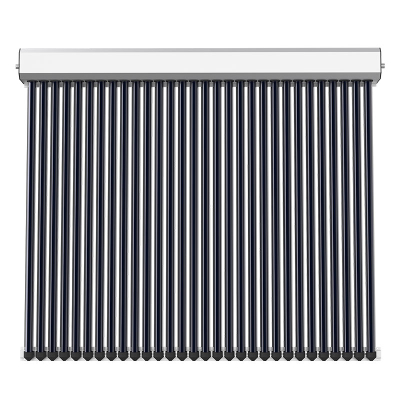How Do PVT Panels Work? The Smart Science Behind Solar Power and Heat Recovery
Traditional solar panels convert merely 20% of sunlight into electricity. The remaining 80%? It dissipates as thermal energy—wasted and problematic. This excess heat not only represents lost potential but actively degrades panel performance through thermal stress, creating a cascading effect that reduces overall system efficiency and shortens equipment lifespan.
PVT panels—Photovoltaic-Thermal hybrid systems—offer an intelligent solution to this persistent challenge. These innovative devices merge electricity generation with thermal capture in a single integrated design, transforming what was once considered waste into valuable, usable resources. By addressing both electrical and thermal energy needs simultaneously, PVT technology represents a paradigm shift in how we approach solar energy harvesting.
Understanding the Fundamental Operating Mechanism of PVT Technology
PVT systems function through a sophisticated dual-process architecture that maximizes energy extraction from solar radiation. Unlike conventional photovoltaic panels that focus exclusively on electrical generation, or standalone solar thermal collectors designed solely for heat capture, PVT technology integrates both functions within a unified framework.
The operational sequence begins when sunlight strikes the panel surface. Photovoltaic cells embedded within the module immediately begin converting solar radiation into electrical current through the photovoltaic effect. Simultaneously, the thermal absorption layer positioned beneath or integrated with the PV cells captures the residual heat that would otherwise accumulate and degrade performance.
Fluid circulation networks—typically containing water, glycol mixtures, or specialized heat transfer fluids—transport the collected thermal energy away from the panel surface. This continuous heat extraction serves dual purposes: it prevents thermal buildup that would reduce electrical efficiency, while simultaneously harvesting usable thermal energy for heating applications.
This synchronized approach elevates total energy utilization beyond 80%, representing a fourfold improvement over conventional photovoltaic systems. Moreover, active cooling enhances electrical output significantly—each 1°C temperature reduction yields a 0.3–0.5% efficiency gain. For panels operating in hot climates where surface temperatures can exceed 70°C, this cooling effect can improve electrical generation by 15% or more compared to uncooled alternatives.
Core Components and Architectural Design
A typical Soletks PVT module incorporates multiple sophisticated components, each engineered to optimize specific aspects of energy capture and conversion. Understanding these elements provides insight into how PVT technology achieves its remarkable performance characteristics.
High-Performance Photovoltaic Cells
At the heart of every PVT panel lies the photovoltaic cell array. Modern Soletks systems utilize advanced N-type TOPCon (Tunnel Oxide Passivated Contact) technology, representing the cutting edge of solar cell development. These cells offer superior efficiency compared to conventional P-type cells, with conversion rates exceeding 22% under standard test conditions.
N-type cells demonstrate several advantages critical to PVT applications. They exhibit lower light-induced degradation, maintaining performance more consistently over decades of operation. Their superior temperature coefficient means they lose less efficiency when operating at elevated temperatures—a crucial characteristic for systems that intentionally capture heat. Additionally, N-type technology shows enhanced low-light performance, generating electricity even during cloudy conditions or early morning and late afternoon hours.
Protective Transparent Glass Layer
The protective glass layer serves multiple critical functions beyond simple weather protection. Constructed from low-iron tempered glass with anti-reflective coatings, this component maximizes light transmission while providing structural integrity and protection against environmental hazards.
The anti-reflective coating reduces surface reflection from typical values of 4-8% down to less than 2%, ensuring maximum light reaches the photovoltaic cells. The low-iron formulation eliminates the greenish tint common in standard glass, further improving light transmission across the solar spectrum. Tempering provides impact resistance against hail, debris, and thermal stress, while the smooth surface facilitates self-cleaning through rain action, reducing maintenance requirements.
Thermal Absorption Plate
The thermal absorption plate represents one of the most critical innovations in PVT design. Constructed from high-conductivity materials such as copper or stainless steel, this component efficiently transfers heat from the photovoltaic cells to the circulating fluid.
Copper plates offer exceptional thermal conductivity—approximately 400 W/m·K—enabling rapid heat transfer with minimal temperature gradients. This ensures the PV cells remain as cool as possible while maximizing thermal energy capture. Stainless steel alternatives provide superior corrosion resistance in harsh environments or when using certain heat transfer fluids, though with slightly reduced thermal conductivity around 15-20 W/m·K.
The plate surface typically features specialized coatings or treatments to enhance absorption. Selective absorber coatings maximize absorption of solar radiation while minimizing thermal re-radiation, improving overall system efficiency. Surface texturing increases contact area with both the PV cells above and heat transfer fluid below, further enhancing thermal exchange.
Integrated Heat Exchange Tubing
Heat exchange tubing forms the circulatory system of the PVT panel, carrying thermal energy away from the absorption plate to storage tanks or direct heating applications. Soletks designs employ serpentine or parallel tube configurations, each optimized for specific applications and flow requirements.
Serpentine designs feature a single continuous tube winding across the panel surface, ensuring uniform flow distribution and simplified hydraulic connections. This configuration works well for smaller installations or where pressure drop must be minimized. Parallel tube arrangements use multiple tubes fed from common headers, enabling higher flow rates and more aggressive heat extraction when maximum cooling is required.
Tube materials typically include copper for its excellent thermal conductivity and ease of forming, or stainless steel for enhanced durability and compatibility with various heat transfer fluids. Tube diameters range from 8-15mm, balancing flow resistance against heat transfer effectiveness. Some advanced designs incorporate microchannel heat exchangers, dramatically increasing surface area and heat transfer coefficients while reducing fluid volume and thermal mass.
Thermal Insulation Materials
Preventing heat loss from the rear of the panel is crucial for maintaining thermal efficiency. High-performance insulation materials—typically polyurethane foam, mineral wool, or aerogel composites—minimize conductive and convective losses to the environment.
Polyurethane foam offers excellent insulation value (R-6 to R-7 per inch) at reasonable cost, with closed-cell structures preventing moisture infiltration. Mineral wool provides superior fire resistance and maintains insulation properties at higher temperatures, making it ideal for high-performance applications. Aerogel composites represent the premium option, delivering exceptional insulation (R-10 per inch) in minimal thickness, though at significantly higher cost.
Insulation thickness typically ranges from 30-50mm, balancing thermal performance against overall panel thickness and weight. Proper insulation design ensures that over 90% of captured thermal energy reaches the heat transfer fluid rather than dissipating to ambient conditions.
Weather-Resistant Backing
The rear backing material provides structural support, weather protection, and electrical insulation. Modern PVT panels employ multi-layer composite materials combining polymeric films, reinforcing fabrics, and protective coatings.
These backing materials must withstand decades of UV exposure, temperature cycling from -40°C to +85°C, humidity, and mechanical stress without degradation. They must also provide electrical insulation exceeding 1000V to ensure safety. Advanced designs incorporate breathable membranes that allow moisture vapor to escape while blocking liquid water ingress, preventing condensation-related degradation.
How Thermal Management Enhances Electrical Performance
The relationship between temperature and photovoltaic performance represents one of the most significant factors limiting conventional solar panel efficiency. Understanding this relationship illuminates why PVT technology's active cooling delivers such substantial benefits.
Temperature Effects on Photovoltaic Cells
Silicon photovoltaic cells exhibit a negative temperature coefficient, meaning their electrical output decreases as temperature rises. This occurs due to fundamental semiconductor physics: as temperature increases, the bandgap energy of silicon decreases, reducing the voltage generated by each photon absorption event.
For typical crystalline silicon cells, the temperature coefficient ranges from -0.3% to -0.5% per degree Celsius. A panel operating at 70°C instead of the standard test condition temperature of 25°C suffers a performance penalty of 13.5% to 22.5%—a massive reduction in electrical generation.
Without active cooling, photovoltaic panels routinely reach temperatures of 60-70°C in moderate climates, and can exceed 80°C in hot, sunny regions with high ambient temperatures and low wind speeds. This thermal stress not only reduces instantaneous power output but accelerates degradation mechanisms, shortening panel lifespan.
Active Cooling Through Heat Extraction
PVT technology addresses thermal limitations through continuous heat extraction. As heat transfer fluid circulates through the panel, it absorbs thermal energy from the absorption plate, which in turn draws heat from the photovoltaic cells. This active cooling maintains cell temperatures much closer to ambient levels, dramatically improving electrical performance.
20-30°C
Temperature Reduction vs Uncooled Panels
6-15%
Higher Electrical Output
80%+
Total Energy Utilization
Field measurements demonstrate that well-designed PVT systems can maintain photovoltaic cell temperatures 20-30°C below equivalent uncooled panels under identical conditions. This temperature reduction translates directly into 6-15% higher electrical output, depending on ambient conditions and system design.
The cooling effect proves most beneficial during peak solar hours when both irradiance and ambient temperatures are highest. This means PVT systems deliver maximum electrical generation precisely when grid demand and electricity prices typically peak, enhancing both energy value and grid stability.
Thermal Energy Recovery and Utilization
Rather than simply dissipating extracted heat to the environment, PVT systems capture this thermal energy for productive use. The heat transfer fluid exits the panel at elevated temperatures—typically 30-60°C depending on flow rate and application—carrying substantial thermal energy.
This recovered heat serves numerous applications:
Domestic hot water heating represents the most common use, with PVT systems easily meeting household hot water demands while simultaneously generating electricity
Space heating applications utilize recovered thermal energy during cooler months, reducing reliance on fossil fuel heating systems
Industrial process heating, swimming pool heating, and agricultural applications such as greenhouse heating all benefit from PVT thermal output
Advanced systems integrate with heat pumps, using recovered thermal energy as a heat source to boost heat pump efficiency
Some installations incorporate seasonal thermal storage, banking excess summer heat in large underground thermal masses for winter heating needs
Comparing PVT Technology to Separate PV and Solar Thermal Systems
Understanding PVT advantages requires comparing integrated systems against the traditional approach of installing separate photovoltaic panels and solar thermal collectors. This comparison reveals significant benefits across multiple dimensions.
| Feature | Separate PV + Thermal | Soletks PVT |
|---|---|---|
| Space Requirements | High (dual systems) | Minimal (unified) |
| Installation Complexity | Multi-stage process | Simplified deployment |
| Initial Investment | Elevated | Reduced |
| Maintenance Demands | Two independent systems | Single integrated system |
| Combined Efficiency | Separate optimization | 80%+ unified performance |
| Roof Penetrations | Multiple mounting systems | Single mounting system |
| Aesthetic Impact | Two distinct systems | Unified appearance |
| System Integration | Separate controls | Integrated management |
| Performance Optimization | Independent operation | Synergistic enhancement |
Space Efficiency and Installation Footprint
Separate systems require dedicated roof or ground space for both photovoltaic arrays and solar thermal collectors. For a typical residential installation providing both electricity and hot water, this might demand 40-50 square meters of available space. In contrast, a PVT system delivering equivalent energy output requires only 20-25 square meters—a 50% reduction in footprint.
This space efficiency proves particularly valuable in urban environments where roof space is limited and expensive. Commercial buildings with high energy demands relative to available roof area benefit enormously from PVT's compact design. The reduced footprint also minimizes structural loading, potentially eliminating the need for roof reinforcement that separate systems might require.
Installation Complexity and Cost
Installing separate photovoltaic and solar thermal systems involves two complete installation processes. Each system requires its own mounting structure, electrical or hydraulic connections, control systems, and commissioning procedures. This duplication increases labor costs, extends installation timelines, and multiplies potential failure points.
PVT systems streamline installation through unified mounting, single-point electrical and hydraulic connections, and integrated control systems. Installation time typically decreases by 30-40% compared to separate systems, reducing labor costs proportionally. Fewer roof penetrations mean reduced waterproofing requirements and lower long-term leak risk.
Initial equipment costs for PVT systems typically run 15-25% lower than purchasing equivalent separate PV and thermal systems. When combined with reduced installation costs, total project costs decrease by 20-35%, significantly improving return on investment and shortening payback periods.
Maintenance and Reliability
Maintaining two separate systems doubles inspection requirements, increases spare parts inventory, and complicates troubleshooting. Each system has its own potential failure modes, maintenance schedules, and service requirements. Over a 25-year system lifetime, this maintenance burden accumulates significantly.
PVT systems consolidate maintenance into a single unified process. One inspection covers both electrical and thermal functions. Spare parts inventory requirements decrease. Technician training simplifies since they need expertise in one integrated system rather than two separate technologies. Reliability improves because fewer components and connections mean fewer potential failure points.
Performance Synergy
Perhaps most importantly, PVT systems achieve performance synergies impossible with separate installations. The active cooling that enhances electrical generation simultaneously produces the thermal output—these benefits reinforce rather than compete with each other. Separate systems operate independently, missing opportunities for optimization.
During periods of low thermal demand, PVT systems can prioritize electrical generation by reducing heat extraction, allowing cells to operate slightly warmer but still cooler than uncooled panels. When thermal demand is high, increased flow rates maximize heat capture while optimizing electrical output. This dynamic optimization delivers superior overall performance across varying conditions and seasonal demand patterns.
Climate Versatility and Seasonal Performance
One of PVT technology's most compelling attributes is its effectiveness across diverse climate zones and throughout seasonal variations. This versatility stems from the technology's ability to adapt its operational emphasis based on environmental conditions and energy demands.
Performance in Hot Climates
Hot, sunny climates present ideal conditions for PVT technology. High solar irradiance provides abundant energy for both electrical generation and thermal capture. Elevated ambient temperatures that would severely degrade conventional photovoltaic performance become an asset when thermal energy has value.
In regions like the Middle East, Mediterranean, or southwestern United States, PVT systems maintain photovoltaic cell temperatures 25-35°C below uncooled panels. This aggressive cooling translates into 12-18% higher electrical generation during peak summer months when air conditioning loads drive electricity demand and prices to maximum levels.
Simultaneously, thermal output remains substantial even when ambient temperatures exceed 35-40°C. While temperature differentials between collector and ambient decrease, high irradiance levels ensure robust thermal energy capture. Applications like industrial process heating, desalination pre-heating, or absorption cooling systems readily utilize this thermal output.
Cold Climate Applications
Cold climates might seem challenging for thermal solar systems, but PVT technology excels in these conditions as well. Lower ambient temperatures increase the temperature differential between collector and environment, enhancing thermal capture efficiency. Snow cover, while temporarily blocking solar access, typically slides off the smooth glass surface more readily than it accumulates on conventional panels.
During winter months, space heating demands peak precisely when PVT systems can deliver maximum thermal output. The combination of clear, cold days with high solar irradiance and substantial heating loads creates ideal operating conditions. Recovered thermal energy directly offsets natural gas, heating oil, or electric resistance heating, delivering immediate economic value.
PVT systems integrate seamlessly with radiant floor heating, which operates efficiently at the moderate temperatures (30-45°C) that PVT collectors produce. Heat pump integration proves particularly effective, with PVT thermal output boosting heat pump COP from typical values of 2.5-3.0 to 3.5-4.5, dramatically reducing heating costs.
Temperate and Variable Climates
Temperate regions with significant seasonal variation showcase PVT technology's adaptability. During summer months, emphasis shifts toward electrical generation with thermal output supporting hot water needs and potentially absorption cooling. Winter operation prioritizes thermal capture for space heating while maintaining electrical generation.
Spring and fall shoulder seasons present optimal conditions for balanced operation. Moderate temperatures maximize photovoltaic efficiency while still providing useful thermal output. These periods often deliver the highest combined energy yields, with total system efficiency exceeding 85%.
Variable weather patterns common in temperate climates—alternating sunny and cloudy days, temperature fluctuations, and precipitation—require robust system design. PVT technology's integrated approach handles these variations more gracefully than separate systems, automatically adjusting to optimize performance under changing conditions.
Real-World Applications and Case Studies
PVT technology's versatility enables deployment across numerous sectors and applications. Examining specific use cases illustrates the practical benefits and implementation considerations.
Hospitality Industry: Hotels and Resorts
Hotels and resorts represent ideal PVT applications due to their substantial, year-round demands for both electricity and hot water. A typical 100-room hotel consumes 150-200 MWh of electricity annually while requiring 50-75 MWh of thermal energy for domestic hot water, laundry, and pool heating.
Case Study: Spanish Resort
A PVT installation in southern Spain demonstrates the technology's effectiveness. The 150-room resort installed 400 square meters of Soletks PVT panels, generating 85 MWh of electricity and 120 MWh of thermal energy annually. The system offset 35% of electrical consumption and 65% of thermal loads, delivering a combined energy cost savings of €28,000 per year. With total installed cost of €95,000, the simple payback period was 3.4 years.
The thermal output proved particularly valuable for pool heating, extending the swimming season by six weeks at each end while eliminating natural gas consumption for this application. Guest satisfaction improved due to consistently available hot water and comfortable pool temperatures, while the resort's sustainability profile enhanced its marketing appeal to environmentally conscious travelers.
Educational Facilities: Schools and Universities
Educational institutions benefit from PVT technology's ability to serve multiple functions while providing educational opportunities. A German secondary school installation illustrates these benefits.
The school installed 250 square meters of PVT panels integrated into a new gymnasium roof. The system generates 42 MWh of electricity annually, offsetting 18% of school electrical consumption. Thermal output of 65 MWh per year provides space heating for the gymnasium and domestic hot water for locker room showers.
Beyond energy benefits, the installation serves as a living laboratory for science and engineering education. Real-time monitoring displays in hallways show current electrical generation, thermal output, and cumulative energy savings. Physics classes use the system for lessons on thermodynamics, semiconductor physics, and renewable energy. Environmental science courses analyze the system's carbon footprint reduction and economic performance.
The educational value extends beyond the host school. The district uses the installation as a demonstration site for other schools considering renewable energy projects, accelerating adoption across the region.
Athletic and Recreation Centers
Sports facilities with swimming pools, ice rinks, and extensive hot water demands for showers and laundry represent premium PVT applications. A case study from a Dutch sports complex demonstrates the technology's impact.
The facility installed 600 square meters of PVT panels, generating 105 MWh of electricity and 180 MWh of thermal energy annually. The thermal output serves multiple functions: pool heating and humidity control, domestic hot water for showers, and space heating for changing rooms and offices.
Pool heating proved particularly cost-effective. The PVT system reduced natural gas consumption for pool heating by 75%, saving €15,000 annually on this single application. The combination of electrical and thermal savings totaled €38,000 per year, delivering a payback period of 4.2 years on the €160,000 investment.
The system's performance monitoring revealed unexpected benefits. By maintaining more stable pool temperatures, evaporation rates decreased, reducing both water consumption and the energy required for humidity control. Indoor air quality improved due to reduced chloramine formation at lower, more stable water temperatures.
Industrial Applications: Process Heating
Industrial facilities with low-to-medium temperature process heating requirements (40-90°C) can effectively utilize PVT thermal output. A food processing facility in Italy provides an illustrative example.
The plant installed 800 square meters of PVT panels to support vegetable washing and blanching operations requiring large volumes of 60-70°C water. The system generates 140 MWh of electricity and 240 MWh of thermal energy annually.
The thermal output preheats process water from ambient temperature to 45-55°C before final heating to required temperatures using natural gas. This preheating reduces natural gas consumption by 40% for these processes, saving €22,000 annually. Electrical generation offsets 25% of facility consumption, saving an additional €16,000 per year.
The installation also improved process reliability. The thermal storage tank provides buffer capacity, ensuring consistent water temperatures even during variable solar conditions. This stability reduced product quality variations and decreased waste rates by 3%, delivering additional economic benefits beyond direct energy savings.
Off-Grid and Remote Installations
Remote locations without grid connections represent perhaps the most compelling PVT applications. A mountain refuge in the Swiss Alps demonstrates off-grid PVT performance.
The facility installed 120 square meters of PVT panels as part of a complete energy system including battery storage and backup generators. The system generates 20 MWh of electricity and 35 MWh of thermal energy annually, meeting 85% of electrical needs and 70% of heating and hot water requirements.
The PVT system's dual output proved crucial for off-grid viability. Electrical generation charges battery banks for lighting, refrigeration, and electronic equipment. Thermal output provides space heating, hot water, and snow melting for access paths. The integrated approach eliminated the need for separate solar thermal collectors, reducing system complexity and improving reliability.
Backup generator runtime decreased by 75% compared to the previous diesel-only system, reducing fuel costs, maintenance requirements, and noise pollution. The refuge's enhanced sustainability attracted environmentally conscious visitors, increasing bookings by 20% and generating additional revenue that accelerated system payback.
Future Developments and Technological Advancement
PVT technology continues evolving rapidly, with ongoing research and development promising further performance improvements and cost reductions. Several emerging trends merit attention.
Advanced Photovoltaic Cell Technologies
Next-generation photovoltaic cells will enhance PVT performance significantly. Heterojunction technology (HJT) combines crystalline silicon with thin-film layers, achieving conversion efficiencies exceeding 25% while maintaining excellent temperature coefficients. Tandem cells stacking perovskite layers atop silicon substrates promise efficiencies beyond 30%, dramatically increasing electrical output from the same collector area.
These advanced cells' superior temperature performance particularly benefits PVT applications. Lower temperature coefficients mean less efficiency loss even when thermal extraction is reduced to maximize thermal output. Higher base efficiency increases electrical generation across all operating conditions.
Spectrum-Splitting Technologies
Emerging spectrum-splitting approaches separate solar radiation into wavelengths optimized for electrical generation versus thermal capture. Dichroic filters or photonic structures direct visible light to photovoltaic cells while routing infrared radiation to thermal absorbers.
This selective approach could increase combined system efficiency to 90% or beyond by optimizing each wavelength's utilization. While currently expensive, ongoing research aims to develop cost-effective spectrum-splitting technologies suitable for commercial deployment within 5-10 years.
Enhanced Thermal Storage Integration
Advanced thermal storage systems will enhance PVT value by decoupling thermal generation from consumption. Phase change materials (PCMs) store large amounts of energy in compact volumes, enabling smaller, more efficient storage tanks. Seasonal thermal storage in large underground reservoirs or borehole fields allows summer heat collection for winter use, dramatically improving heating system economics in cold climates.
Smart control systems will optimize PVT operation based on weather forecasts, energy prices, and demand predictions. Machine learning algorithms will continuously improve performance by learning building thermal characteristics and occupant behavior patterns.
Conclusion: The Future of Integrated Solar Energy
PVT panels represent more than incremental improvement over conventional solar technologies—they embody a fundamental rethinking of how we harvest and utilize solar energy. By integrating electrical generation with thermal capture, PVT systems achieve efficiency levels impossible with separate approaches while reducing costs, simplifying installation, and improving reliability.
The technology's versatility across climates, applications, and scales makes it suitable for residential, commercial, industrial, and institutional deployments. Real-world installations consistently demonstrate strong economic performance with payback periods of 3-6 years, well within equipment lifespans exceeding 25 years.
As photovoltaic cell technologies advance, thermal storage improves, and system costs decline through manufacturing scale, PVT adoption will accelerate. The technology's ability to address both electrical and thermal energy needs positions it as a cornerstone of sustainable building design and renewable energy deployment.
For building owners, facility managers, and energy planners, understanding PVT technology's operating principles, benefits, and applications enables informed decision-making. Soletks stands ready to support successful PVT implementations, providing advanced technology, expert guidance, and comprehensive support throughout project lifecycles.
The transition to sustainable energy systems requires not just renewable generation, but intelligent integration that maximizes resource utilization while minimizing waste. PVT technology exemplifies this approach, delivering practical, economically viable solutions that benefit users, communities, and the environment. As we build toward a sustainable energy future, PVT panels will play an increasingly central role in how we harvest, manage, and utilize solar energy.




